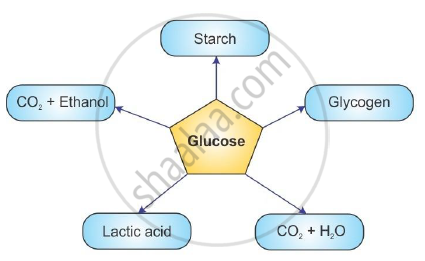Advertisements
Advertisements
प्रश्न
Answer in detail.
How all the life processes contribute to the growth and development of the body?
उत्तर
Life processes are processes which are required to maintain body functions and are necessary for survival. The important life processes are nutrition, transportation, metabolism, reproduction, respiration, and excretion. All these processes work together and result in the growth and development of the body. For example, nutrition is the process by which we take up nutrients which are used by the cells to meet their respective needs. This is a vital process which helps living beings to obtain their energy from various sources. Respiration is associated with the exchange of gases as well as burning of food. It results in the breakdown of glucose and release of oxygen. Similarly, cell cycle and cell division play an important role in the growth and development of the organisms. They help in the formation of new organisms as well as repair of dead and damaged cells and tissues.
APPEARS IN
संबंधित प्रश्न
Given below are the end products of different reactions involving glucose. Write the appropriate end product in front of the following:

(1) Anaerobic reaction =
(2) Reaction in human muscles =
(3) Aerobic respiration
(4) Reaction in plant cells =
(5) Reaction in liver =
Name the life process of an organism that helps in the growth of its population.
Why is diffusion insufficient to meet the oxygen requirements of multi-cellular organisms like humans
Which is the basic requirement of living organisms for obtaining energy?
Match the organisms given in column I with the processes given in column II:
| Column I | Column II | ||
| (i) | Leech | (a) | Holozoic nutrition |
| (ii) | Amoeba | (b) | Autotrophic nutrition |
| (iii) | Mushroom | (c) | Parasitic nutrition |
| (iv) | Green plant | (d) | Saprophytic nutrition |
Match the terms in column I with their uses in column II
| Column I | Column II |
| (i) Heart | (a) Pipes for transport in humans |
| (ii) Arteries and Veins | (b) Clotting of blood |
| (iii) Xylem vessels | (c) Pumping organ |
| (iv) RBC | (d) Water transport in plants |
| (v) Platelets | (e) Carrier of oxygen |
A person lives near a forest. Make a list of four items which he can get from the forest to meet his daily needs.
Name the green dot like structures in some cells observed by a student when a leaf peel was viewed under a microscope. What is this green colour due to?
Skin : Keratin : : Blood : ____________
Rewrite the food-chain given below with correct sequence.
Grasshopper– Snake– Paddyfield– Eagle– Frog
Fill in the blank and explain the statement.
Our muscle cells perform ______ type of respiration during exercise.
Write definition.
Nutrition.
Write definition
Nutrients
Write definition.
Glycolysis
Give scientific reason.
Oxygen is necessary for complete oxidation of glucose.
Give scientific reason.
Kreb's cycle is also known as citric acid cycle.
Explain the glycolysis in detail.
Write the forms to which following food materials are converted after digestion.
1.Milk
2. Potato.
3. Oil.
4. Chapati
Answer in detail.
Explain the Kreb's cycle with reaction.
Complete the following chart and state which process of energy production it represents:

Explain the ‘inhalation’.
Why is there a difference in the rate of breathing between aquatic organisms and terrestrial organisms? Explain.
Assertion: When air is passed through lime water, lime water turns milky.
Reason: Air contains 78% nitrogen and 21% oxygen.
Choose the forms in which most plants absorb nitrogen
- Proteins
- Nitrates and Nitrites
- Urea
- Atmospheric nitrogen
Why do fishes die when taken out of water?
Match the words of Column (A) with that of Column (B)
| Column A | Column B |
| Phloem | (i) Excretion |
| Nephron | (ii) Translocation of food |
| Veins | (iii) Clotting of blood |
| Platelets | (iv) Deoxygenated blood |
Match the terms in Column (A) with those in Column (B)
| Column (A) | Group (B) |
| (a) Trypsin | (i) Pancreas |
| (b) Amylase | (ii) Liver |
| (c) Bile | (iii) Gastric glands |
| (d) Pepsin | (iv) Saliva |
Explain the following concept in short:
Balanced Diet
Explain the following concept in short:
Role of circulatory system in energy production
Give scientific reason.
Cell division is one of the important properties of cells and organisms.
Give one example of each of the classifications of vitamins.
